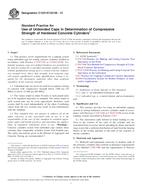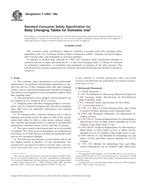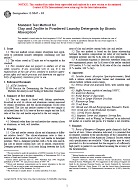1.1 Four test methods to accelerate the effects of long term indoor illumination on artists’ paints are described as follows:
1.1.1 Test Method A – Exposure to natural daylight filtered through glass,
1.1.2 Test Method B – Exposure to irradiance from daylight fluorescent lamps,
1.1.3 Test Method C – Exposure in xenon-arc irradiance simulating daylight filtered through glass, and
1.1.4 Test Method D – Exposure to irradiance from cool white fluorescent lamps and soda-lime glass filtered fluorescent UV sunlamps.
1.2 These test methods are used to approximate the color change that can be expected over time in pigments used in artists’ paints in normal indoor exposure.
Note 1 – The color changes that result from accelerated exposure may not duplicate the results of normal indoor exposure in a home or gallery. The relative resistance to change, however, can be established so pigments can be assigned to categories of relative lightfastness.
1.3 Lightfastness categories are established to which pigments are assigned based on the color difference between specimens before and after exposure.
1.4 Color difference units are calculated by the CIE 1976 L*a*b* color difference equation.
1.5 These test methods apply to artists’ oil, resin-oil, acrylic emulsion, alkyd, watercolor paints, and gouache paints.
1.6 The values stated in SI units are to be regarded as the standard. The values given in parentheses are for information only.
1.7 This standard does not purport to address the safety concerns, if any, associated with its use. It is the responsibility of the user of this standard to establish appropriate safety and health practices and determine the applicability of regulatory limitations prior to use.
Product Details
- Published:
- 05/10/2003
- Number of Pages:
- 10
- File Size:
- 1 file , 230 KB


